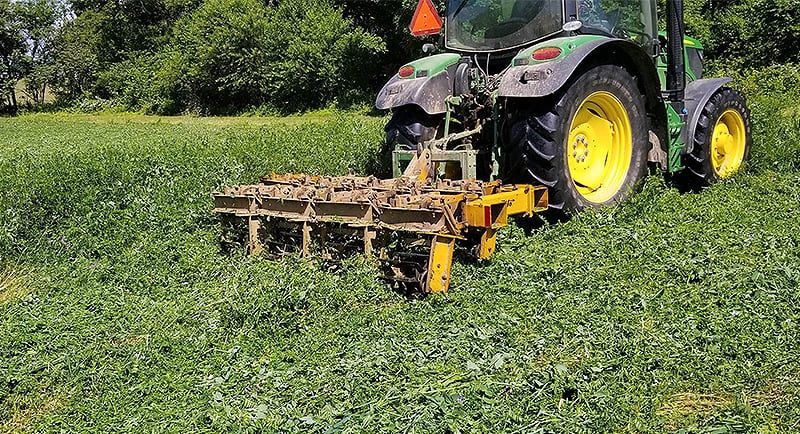“A mix of hairy vetch and a winter grain is often used before corn and cereal rye is predominantly used before soybeans,” he explains. “For this strategy to work properly, timely termination is necessary to prevent covers from producing viable seed and possibly becoming a volunteer later in the rotation.” Wallace says hairy vetch is generally sown alone or with a grass, such as triticale or cereal rye, and it is rolled before planting corn.
When growing cereal rye to roll and use as a mulch in soybean, later termination results in greater biomass, Wallace says.“Also, late termination of cereal rye can improve control of the cover crop, although control of the standing cereal rye does not eliminate the potential for regrowth or seed production.“If cereal rye is rolled too early (before 50% anthesis), it can produce new tillers that flower and produce seeds. If it is rolled too late (after the medium milk stage), kernels will continue to develop on dying plants and mature on the soil surface. Termination of cereal rye with a roller-crimper should target the period between 50% anthesis and early milk stages.”Wallace says to improve the control over the cereal rye cover crop, Penn State recommends rolling the rye twice, once approximately 1 week before soybean planting and again on the day of soybean planting. Unlike in corn, rolling should not occur after soybean planting to avoid injury to the emerging soybean plants.“We’ve found the weight of the tractor and planter can complement the rolling by further crimping the cereal rye,” he says.
Related Content:
[Video] Roller-Crimping Rye with Scott Shriver
How to Get Effective Cover Crop Termination with Roller-Crimping
[Podcast] The Latest on Cover Crop Research and No-Till Organic Systems with Dr. Erin Silva





Post a comment
Report Abusive Comment